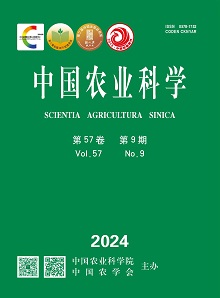【Objective】 CIPKs are a group of important protein kinase involved in signaling pathway of plant in response to stress. They can form CBL-CIPK complex with CBL, to activate the expression of related responsive genes to cope with various abiotic stresses in cells. Exploration and study on the molecular mechanism of MsCIPK genes in alfalfa in response to abiotic stress will help to reveal the biological basis of stress resistance in alfalfa, and to provide new gene resources for alfalfa breeding with enhanced stress resistance. 【Method】 The MsCIPK2 gene was cloned by using PCR, the sequence was analyzed by bioinformatics tools, and the expression level of MsCIPK2, MsCBL2, MsCBL6, MsCBL7 and MsCBL10 genes in various tissues were analyzed by using qRT-PCR. The pCAMBIA1302-GFP-MsCIPK2 vector was transiently expressed in tobacco leaf epidermal cells, and the subcellular localization was observed under laser confocal microscope. Yeast two-hybrid assay was used to analyze interaction between MsCIPK2 and four MsCBLs proteins. Agrobacterium rhizogenes was used to generate alfalfa hairy roots over-expressing MsCIPK2. qRT-PCRs were used to analyze the expression levels of related genes in transgenic hairy root lines. 【Result】 The coding sequence of MsCIPK2 gene was obtained by using PCR, and it is 1 230 bp in length, encoding 409 amino acids. The deduced MsCIPK2 protein contained typical ATP binding site, activation loop, NAF motif and PPI motif as for the CIPK family genes. The expression level of MsCIPK2 gene was the highest in roots, and the lowest in the flowers of alfalfa. Subcellular localization results showed that MsCIPK2 protein was localized in the endoplasmic reticulum. Yeast two-hybrid assays showed that MsCIPK2 protein interacted with MsCBL2, MsCBL6, MsCBL7 and MsCBL10 proteins, showing stronger interaction with MsCBL10 than with other MsCBLs. The expression levels of MsCBL2, MsCBL6, and MsCBL10 were the highest in roots of alfalfa, and the expression level of MsCBL7 was the highest in pods. qRT-PCR results showed that the expression levels of abiotic stress-associated genes ATPase, P5CS, CYP705A5, COR47, HAK5 and RD2 were significantly up-regulated in hairy roots over-expressing MsCIPK2. Under the treatment of 200 mmol·L-1 NaCl and 20% PEG, when compared with the control hairy root line, hairy roots over-expressing MsCIPK2 had lower MDA content, and higher POD activity, proline content and soluble sugar content. 【Conclusion】 MsCIPK2 can interact with CBL protein, and responded to salt and drought stress in roots of alfalfa. Over-expression of MsCIPK2 can improve salt and drought stress resistance in alfalfa, and MsCIPK2 can be used as candidate gene for alfalfa breeding with improved abiotic stress resistance.











